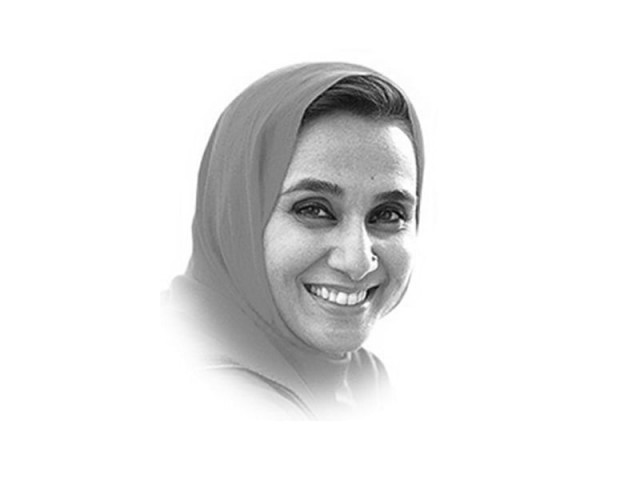Anemic mothers and children — Pakistan’s Achilles’ heel
38 per cent of Pakistan’s children under five are stunted, one of the highest prevalence numbers in the world

Numbers are a trusted friend to a journalist. We rely on statistics to make a news story. We get used to using them, but these numbers don’t stop hurting. One such number is 38: 38 per cent of Pakistan’s children under five are stunted, one of the highest prevalence numbers in the world, for one of the most populous countries in the world. In the province of Sindh, the numbers for stunted children are even more jarring, reaching 50 per cent. The reasons are many: illiteracy of parents, lack of sanitation facilities, and the child being later born in the birth order among siblings. The umbrella reason under which all these fall is obvious—poverty. With poverty comes the resulting aspect of malnutrition, and iron deficiency ranks among the top nutritional deficiencies —49.1 per cent of children under the age of five years have iron deficiency in Pakistan, as per the National Nutrition Survey 2018.
Gender bias also seems to be at play. According to the article “Why under five children are stunted in Pakistan? A multilevel analysis of Punjab Multiple indicator Cluster Survey”[i], being a girl child is more likely associated with moderate and severe stunting. A malnourished and anemic mother has higher chances of giving birth to a low birth weight (LBW) infant, causing neonatal deaths. One in four newborns are reported as underweight in Pakistan. These children are more susceptible to stunting, wasting, diseases, and even death. Joining the dots, the iron deficiency of mothers and in turn of children, results in a heavy cost to not just them, but also to their families and communities. As per the World Health Organization’s (WHO) estimates, 42 per cent of children less than 5 years of age and 40 per cent of pregnant women worldwide are anaemic.
Malnutrition costs Pakistan US$7.6 billion, or three per cent of the gross development product (GDP), every year, as per the report[1] “The Economic Consequences of Undernutrition in Pakistan: An Assessment of Losses”, launched by the Pakistan Scaling Up Nutrition (SUN) Secretariat at the Ministry of Planning, Development & Reform, in collaboration with the United Nations World Food Program. More numbers from this report that are enough to shell-shock us. Some 177,000 Pakistani children under age five die annually because they or their mother are malnourished. More than two-third Pakistani children suffering from stunting, anemia or iodine deficiencies will suffer deficits in mental and physical development, leading to lower school performance and lower productivity as adults, depressing the GDP by US$3.7 billion annually. Some 10 million plus adults with anemia suffer from chronic weakness and fatigue, further reducing economic output in the country.
Whenever we talk of Pakistan’s brain drain, what comes to mind is the expatriate Pakistanis. But the effects of malnutrition and iron deficiency on our children and youth is a literal brain drain that has perhaps not been given the correct label. Deficiencies in micronutrients—folic acid, iodine, iron, zinc, selenium, copper, magnesium, vitamins A, C, D, E, B6 and B12 to name some of the key ones— result in effecting the sufferer negatively. Neurologic deficits, slower reflexes, impaired or less than optimal motor skills, and even mental health issues in the long run like depression are possible results. Dr Irshad Danish of SUN is on record saying that stunted children have a seven-month delay in starting school, have lower intelligence quotient, are more likely to repeat a grade of school, complete one year less of schooling on an average, and are less likely to graduate high school. The effects of malnourishment include a low IQ, poor concentration, attention deficit, and memory disorders.
While Pakistan’s accelerated emphasis on and improvement in sectors like tourism, job creation, the construction industry, and even environment-friendly interventions are encouraging, how will the future generations utilize these opportunities if half of the country’s children are suffering from insufficient nourishment that makes it difficult for them to even survive, leave alone win in the competitive world in a digitized world where your mainstay is a sharp mind.
The positive thing, however, is that increased awareness about the link between iron deficiency anemia and mental and physical development of children has led to increased research about solutions for this global public health conundrum. Both WHO and the United Nations International Children's Emergency Fund (UNICEF) recommend preventive strategies. These include nutritional supplements, consumption of food rich in iron, fortifying food with nutrients, mass awareness campaigns, and educational interventions. Massey University of New Zealand has used technological research to come up with Iron+, a new and improved iron source that can result in three times more absorption in body as compared to the existing sources of iron.
Understanding the link between proper nutrition and optimal growth and school performance, the Punjab School Education Department (SED) has recently launched the ‘School Meals Programme’ in16 primary schools in Lahore. Not-for-profit organizations are now exceedingly including food supplement programs and not just academic facilities in their educational programmes. But despite, the Achilles’ heel seems to be not linking this to the overall health and nutritional deficiencies—especially iron deficiency anemia—among mothers.
[1] ( “The Economic Consequences of Undernutrition in Pakistan: An Assessment of Losses", 2016) https://www.wfp.org/publications/economic-consequences-undernutrition-pakistan-2016
[i] Mahmood, T., Abbas, F., Kumar, R. et al. Why under five children are stunted in Pakistan? A multilevel analysis of Punjab Multiple indicator Cluster Survey (MICS-2014). BMC Public Health 20, 952 (2020)















COMMENTS
Comments are moderated and generally will be posted if they are on-topic and not abusive.
For more information, please see our Comments FAQ